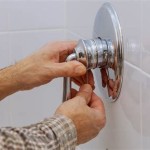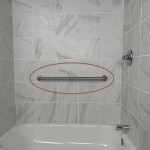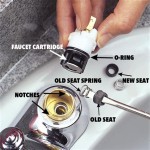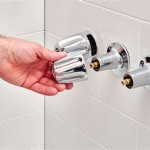Wooden Bathtub Caddy Plans: A Comprehensive Guide
The wooden bathtub caddy, a simple yet elegant accessory, enhances the bathing experience by providing a convenient surface for holding essentials. From books and beverages to candles and electronics, a well-designed caddy allows for a more relaxed and organized soak. This article explores various wooden bathtub caddy plans, offering insights into design considerations, material selection, construction techniques, and finishing options.
The demand for DIY projects has increased notably, driven by a desire for personalized home decor and cost-effective solutions. Constructing a wooden bathtub caddy is an accessible project for woodworkers of varying skill levels. The availability of numerous plans, ranging from simple designs to more elaborate configurations, ensures that individuals can find a project that aligns with their capabilities and aesthetic preferences.
Design Considerations for Wooden Bathtub Caddies
Before embarking on a construction project, it is crucial to carefully consider the design. Several factors influence the functionality and aesthetic appeal of a wooden bathtub caddy. These include the bathtub's dimensions, the intended use of the caddy, and the desired style. Accurate measurements of the bathtub's width are paramount. It is essential to account for any variations in the width, particularly if the tub has a curved or irregular shape. The caddy should extend slightly beyond the edges of the tub, providing a stable and secure platform.
The intended use of the caddy will dictate the types of compartments and features that are incorporated. A simple design might consist of a flat surface for holding a book or tablet, while a more elaborate design might include dedicated slots for a wine glass, a candle holder, and storage compartments for bath products. The inclusion of a book rest or a tablet holder can significantly enhance the practicality of the caddy for those who enjoy reading or watching videos while bathing.
The overall style of the caddy should complement the bathroom's decor. Options range from rustic and minimalist designs to more contemporary and ornate styles. The choice of wood, finish, and hardware will contribute to the overall aesthetic impact. For example, a caddy constructed from reclaimed wood with a distressed finish will evoke a rustic charm, while a caddy made from polished hardwood with sleek metal accents will project a more modern aesthetic.
Material Selection for Wooden Bathtub Caddies
The selection of wood is a critical factor in determining the durability, appearance, and lifespan of the bathtub caddy. Given the caddy's exposure to moisture, it is essential to choose a wood species that is naturally water-resistant or that can be effectively sealed and protected. Several wood options are commonly used for bathtub caddy construction, each with its own advantages and disadvantages.
Cedar is a popular choice due to its natural resistance to rot, decay, and insects. It also possesses a distinctive aroma that can enhance the bathing experience. Teak is another excellent option, renowned for its exceptional durability and water resistance. Teak is commonly used in boatbuilding and outdoor furniture, making it well-suited for the humid environment of a bathroom. However, both cedar and teak tend to be more expensive than other wood options.
Other suitable wood species include redwood, cypress, and white oak. These woods offer good water resistance and are generally more affordable than cedar and teak. Pine, while a more economical option, requires thorough sealing and protection to prevent water damage. Regardless of the wood species chosen, it is crucial to select high-quality lumber that is free from knots, cracks, and other defects that could compromise the caddy's structural integrity.
In addition to wood, various other materials may be incorporated into the design, such as metal hardware, rubber feet, and non-slip pads. Stainless steel or brass hardware is recommended to resist corrosion in the humid bathroom environment. Rubber feet or non-slip pads can be attached to the bottom of the caddy to prevent it from sliding on the bathtub surface.
Construction Techniques for Wooden Bathtub Caddies
The construction of a wooden bathtub caddy involves several key steps, including cutting, shaping, joining, and finishing the wood. Accurate measurements and precise cuts are essential for ensuring a well-fitted and aesthetically pleasing product. The use of woodworking tools such as a saw, drill, sander, and router is typically required.
After the wood has been cut to the appropriate dimensions, it may be necessary to shape certain components, such as rounding the edges or creating decorative profiles. A router can be used to create smooth, rounded edges, while a sander can be used to refine the surfaces and remove any imperfections. The various components of the caddy can be joined using a variety of techniques, including screws, nails, glue, or a combination thereof. Wood glue, specifically formulated for moisture resistance, is recommended for ensuring a strong and durable bond.
For more advanced joinery, techniques such as dovetail joints or mortise and tenon joints can be used to create a stronger and more visually appealing connection. These techniques require greater skill and precision but can significantly enhance the caddy's structural integrity and aesthetic value. The chosen joinery method should be appropriate for the type of wood being used and the overall design of the caddy.
Once the caddy has been assembled, it is essential to thoroughly sand all surfaces to create a smooth and even finish. Sanding removes any imperfections and prepares the wood for the application of a sealant or finish. The choice of sealant or finish will depend on the type of wood being used and the desired aesthetic effect.
Finishing Options for Wooden Bathtub Caddies
The finishing stage is crucial for protecting the wood from moisture and enhancing its appearance. Several finishing options are available, each offering different levels of protection and aesthetic qualities. Common choices include varnish, polyurethane, lacquer, and oil-based finishes. The selection of a suitable finish is important for ensuring the longevity and durability of the bathtub caddy.
Varnish and polyurethane are popular choices for their durability and water resistance. These finishes create a hard, protective coating that shields the wood from moisture and scratches. They are available in a variety of sheens, from matte to gloss, allowing for customization of the final appearance. Multiple coats of varnish or polyurethane are typically required to achieve adequate protection.
Lacquer is another durable finish that provides excellent water resistance. It is often used in furniture making and offers a smooth, glossy finish. Lacquer typically requires specialized equipment for application, such as a spray gun, and is best suited for experienced finishers.
Oil-based finishes, such as tung oil or linseed oil, penetrate the wood and provide a more natural look and feel. These finishes enhance the wood's grain and color, but they offer less protection than varnish, polyurethane, or lacquer. Oil-based finishes require regular reapplication to maintain their protective qualities.
Before applying any finish, it is important to prepare the wood surface properly. This includes sanding the wood smooth, removing any dust or debris, and applying a coat of wood conditioner if necessary. The finish should be applied according to the manufacturer's instructions, using appropriate brushes or spray equipment. Multiple coats may be required to achieve the desired level of protection and aesthetic appearance.
Additional Features and Customizations
Beyond the basic design, several additional features and customizations can be incorporated into a wooden bathtub caddy. These enhancements can improve the functionality and aesthetic appeal of the caddy, tailoring it to individual needs and preferences. These might include incorporating a wine glass holder or a candle holder, adding storage compartments for toiletries, or installing a built-in Bluetooth speaker.
A wine glass holder can be created by cutting a suitably sized hole in the caddy's surface, with a slot to hold the stem of the glass securely. A candle holder can be crafted from a small metal or ceramic dish embedded into the wood, providing a safe and stable platform for burning candles. Storage compartments can be integrated into the design by adding small boxes or trays to the caddy's surface. These compartments can be used to hold bath products, such as soaps, shampoos, and lotions.
For those who enjoy listening to music or podcasts while bathing, a built-in Bluetooth speaker can be a valuable addition. A small, waterproof Bluetooth speaker can be recessed into the caddy's surface, providing a convenient and hands-free audio experience. The speaker should be securely mounted and protected from water damage.
Another customization option is to add decorative elements to the caddy's design. This might include carving intricate patterns into the wood, adding metal accents, or painting the caddy with decorative designs. Personalizing the caddy with initials, dates, or other meaningful symbols can also enhance its aesthetic value and make it a unique and cherished item.
Ensuring Safety and Stability
Safety is a paramount concern when constructing a wooden bathtub caddy. Given the presence of water and electrical appliances in the bathroom, it is essential to take precautions to prevent accidents and injuries. The caddy should be designed to be stable and secure, preventing it from tipping over or sliding on the bathtub surface. All electrical devices used in conjunction with the caddy should be waterproof or water-resistant.
The caddy should be constructed from durable materials that can withstand the weight of the items placed on it. Reinforcing the caddy's structure with additional supports or brackets can improve its stability. Rubber feet or non-slip pads should be attached to the bottom of the caddy to prevent it from sliding on the bathtub surface. These features provide added grip and stability, reducing the risk of accidents.
When using electrical devices, such as tablets or phones, with the caddy, be sure to use waterproof or water-resistant cases to protect them from water damage. Avoid placing electrical devices near water sources, such as the faucet or showerhead. Keep cords and cables away from water to prevent electrical shock. It is also essential to supervise children when they are using the bathtub and the bathtub caddy.
By carefully considering the design, materials, construction techniques, and finishing options, and by prioritizing safety and stability, individuals can create a wooden bathtub caddy that enhances their bathing experience and adds a touch of elegance to their bathroom.

Bath Tray Plan Caddy Bathtub Wood Tub Pattern Soap Shelf

Diy Bathtub Tray Using Scrap Wood 3 Diffe Ways Her Happy Home

Easy Diy Cedar Bathtub Caddy

Build An Elegant Wooden Bath Tray Finewoodworking

Build An Elegant Wooden Bath Tray Finewoodworking

Diy Wood Bathtub Caddy Tray

Easy Diy Cedar Bathtub Caddy

Diy Bathtub Tray Step By Tutorial Prodigal Pieces

Free Plans Diy Bath Tub Tray Tutorial

Bathtub Tray Diy Build
Related Posts








